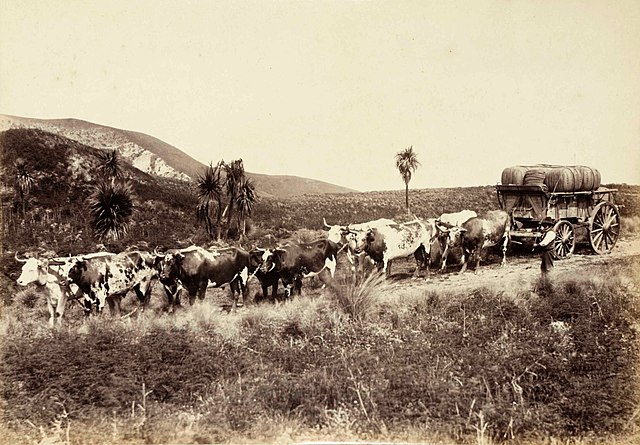Sheep farming in New Zealand
Sheep farming is a significant industry in New Zealand. According to 2007 figures reported by the Food and Agriculture Organization (FAO) of the United Nations, there are 39 million sheep in the country. The country has the highest density of sheep per unit area in the world. For 130 years, sheep farming was the country's most important agricultural industry, but it was overtaken by dairy farming in 1987. Sheep numbers peaked in New Zealand in 1982 to 70 million and then dropped to about 27.6 million. There are 16,000 sheep and beef farms in the country which has made the country the world's largest exporter of lambs, with 24 million finished lambs recorded every year.
Landscape 'carpeted' with sheep
Glenmark mansion in the late 1880s, built for George Henry Moore, which served to demonstrate its owner's extreme wealth
Merino sheep
Romney ewe with triplet lambs
Agriculture in New Zealand
In New Zealand, agriculture is the largest sector of the tradable economy. The country exported NZ$46.4 billion worth of agricultural products in the 12 months to June 2019, 79.6% of the country's total exported goods. The agriculture, forestry and fisheries sector directly contributed $12.653 billion of the national GDP in the 12 months to September 2020, and employed 143,000 people, 5.9% of New Zealand's workforce, as of the 2018 census.
A bullock wagon team taking wool from a farm station. The number of sheep in New Zealand peaked in the 1980s and has reduced due to lower profits from wool, and larger breeds of sheep for meat
Beef and dairy cattle are important components of New Zealand agriculture
Rural landscape with sheep
Vineyard in Marlborough








